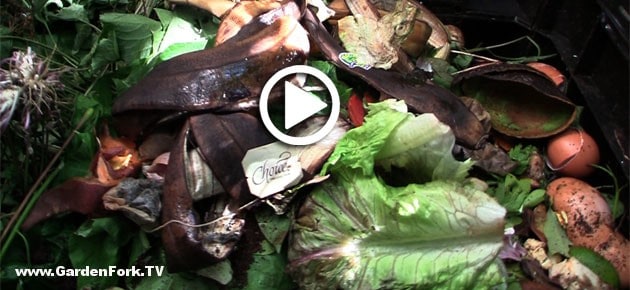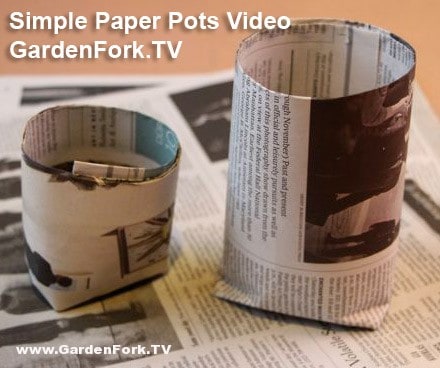These cardboard seed starting pots are made from paper towel tubes. Biodegradable plant pots made from stuff in your house. Watch this DIY video about how to make the seed starting pots and get more info below, plus links to our other seed starting videos.
You can buy seed starting pots, but I like to make them with stuff I already have. Our neighbor, Priscilla, who we call ‘The Egg Lady’ because we get our eggs from her, has a huge garden. She grows many heirloom tomatoes, in addition to some stuff I have never heard of. Unique string beans, heirloom flowers, plus she has several apple orchard around the property. Priscilla is like me, always wanting to share cool stuff she has discovered or found or grown.
Plus she has a menagerie of animals, horses, turkeys, guinea hens, cats, and dogs. You can hear Priscilla on GardenFork Radio here.
I had been saving cardboard tubes for her and then one day she showed me what she was doing with all the tubes. So I wanted to share this all with you.
Couple of important things to remember when using starting plants from seed:
- Cardboard seed starting pots are not for long term use.
- Take care not to over-water them. Too much water invites mold and fungus, as a result, bad things when you are starting plants.
- Don’t use potting soil to start seeds. Buy seed starting mix.
- You can also use coir, which is shredded coconut fiber, mixed with vermiculite and perlite.
- Do not add fertilizer to seed starting mixes.
- Use a grow light rig. Learn how to build a DIY Grow Light here.
The height of the seed starting pot depends on the plants you are growing. Taller plants need more root space, therefore, make those pots larger. Salad greens can be grown in a 2″ high pot.
Here are some of our hoop house cold frames for when its time to move the seedlings in to the garden:
So there you go, let me know any improvements or suggestions and how you start seeds in the comments below.




















 A couple things to keep in mind while you’re building this hoop house, especially if you are using this on raised beds. You want this hoop house to fit just inside the walls of your raised bed. I made this mistake when I made my first hoop house, I didn’t measure how wide my raised bed was and the cold frame didn’t fit exactly. Experience has once again taught me something. The frame fits just inside the wooden sides of the raised bed and it doesn’t have to have a super tight seal with the soil, you do want some air exchange in and out. What the hoop house is doing is moderating temperature. When it gets really cold outside, it’s going to be cold in there but it will extend your growing season.
A couple things to keep in mind while you’re building this hoop house, especially if you are using this on raised beds. You want this hoop house to fit just inside the walls of your raised bed. I made this mistake when I made my first hoop house, I didn’t measure how wide my raised bed was and the cold frame didn’t fit exactly. Experience has once again taught me something. The frame fits just inside the wooden sides of the raised bed and it doesn’t have to have a super tight seal with the soil, you do want some air exchange in and out. What the hoop house is doing is moderating temperature. When it gets really cold outside, it’s going to be cold in there but it will extend your growing season.























 If you want to save money and avoid having more plastic pots around, consider using cardboard or newspaper seed starting pots. The videos above show how easy it is to make these.
If you want to save money and avoid having more plastic pots around, consider using cardboard or newspaper seed starting pots. The videos above show how easy it is to make these.

























 Its best to bunch the paper pots together under grow lights, as the paper can wick away moisture from the seed staring soil, packing the pots close together cuts down on that evaporation. You can watch our how to
Its best to bunch the paper pots together under grow lights, as the paper can wick away moisture from the seed staring soil, packing the pots close together cuts down on that evaporation. You can watch our how to